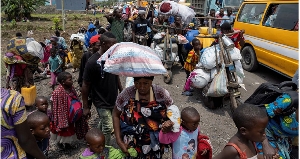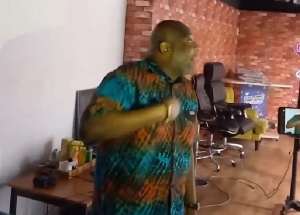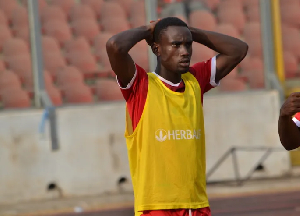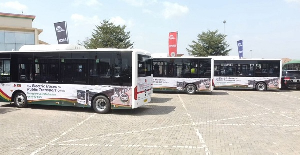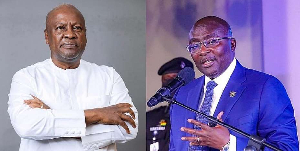In the Democratic Republic of Congo, war in the east is generally considered both national and foreign policy issue. Which means that whoever Kinshasa associates with specifically indicates how it feels about its security needs.
Last week, in Windhoek, Namibia President Félix Tshisekedi met with his peers, Cyril Ramaphosa of South Africa , Lazarus Chakwera of Malawi and Evariste Ndayishimiye of Burundi, with whom he analysed the security situation in the DRC.
Tshisekedi had already met with Ndayishimiye in Kinshasa 10 days earlier on the security issue. In Windhoek, they met on the sidelines of the funeral of the Namibian President Hage Geingob.
The Southern Africa axis has been consolidating its might against armed groups in the eastern part of the Congo, led by the M23.
Burundi and Tanzania, East African Community (EAC) members, have been grafted onto this Southern Africa axis.
They, alongside Malawi and South Africa, have sent troops to eastern Congo to boost the Southern African Development Community (SADC) mission there. Burundi had been part of the East African Community Regional Forces (EACRF), whose mandate ended last December, blamed by Kinshasa for doing little against M23. Tanzania avoided the EAC mission.
Gitega, like Kinshasa, is at loggerheads with Rwanda. The DRC accuses Rwanda of supporting the M23 rebels. Burundi, too, is accusing Kigali of supporting the Red Tabara rebels hiding in South Kivu.
Rwanda rejects these allegations, maintaining that the DRC has integrated the FDLR into its army. As for Burundi’s accusations, Kigali argues that “Rwanda is not associated, in any way, with any Burundian armed group.”
In the Great Lakes region, Burundi has become DR Congo’s best defence ally. Just a few weeks ago, in 2023, the Congolese President used to consult his counterparts Yoweri Museveni of Uganda and William Ruto of Kenya on security issues. Now, the authorities in Kinshasa are relying on SADC.
It never used to be this way. At the start of his first term in office in 2019, Tshisekedi was wary of SADC, whose heads of state were considered to be close to Joseph Kabila, his predecessor.
Tshisekedi opened up to Rwandan President Paul Kagame and then Kenyan President Uhuru Kenyatta. At the time, the aim was to find political allies in the region.
The context in the DRC was different then: there was no M23 war. And internally, Félix Tshisekedi was struggling to establish himself as head of state in a coalition where his predecessor Joseph Kabila had a stranglehold on parliament, the government and the army.
The EAC was therefore Tshisekedi’ s main supporter.
The large market that the Congo represented in the eyes of the EAC was opening up, with plenty of consumers and opportunities. But first they had to help the Congo get rid of the armed groups.
And when the M23 war broke out at the end of 2021, Félix Tshisekedi turned to the Eastern bloc for support. Troops from Eastern bloc countries were been deployed. It never satisfied Kinshasa, which criticised the Eastern bloc contingents for being complacent towards the rebels. That was where the first rift began.
For almost a year, the DRC and the Eastern bloc member states had been unable to define a common strategic and operational plan against the rebels. Then Tshisekedi became chairperson of the SADC in August 2022. It was at this time that links with the southern bloc began to consolidate.
In the DRC, meanwhile, opinion was divided between those who wanted SADC to deploy its troops and those who wanted the DRC to put the FARDC (the Congolese army) fully in charge of dealing with the armed groups.
“Instead of providing the country with an effective army, the government has opted for a policy of outsourcing national security to foreign forces and, worse still, to states that are behind the destabilisation of the country,” denounced opposition leader Martin Fayulu and Nobel Prize winner Denis Mukwege, also an unsuccessful challenger to Tshisekedi in last year’s elections sided with Fayulu in citing Rwanda and Uganda as being “at the root of the destabilisation” of the Congo.
Some have recalled that SADC had deployed before in 1998 when was troops from Zimbabwe, Angola and Namibia who routed rebellions that reached Kinshasa. But they were also accused of misdeeds afterwards including looting.
Trends are mixed, but not everyone seems to be counting on the East African community to put out the fire in the DRC.
Former DRC electoral body chief Corneille Nangaa’s launch in Nairobi in December 2023 of a new armed coalition aimed at overthrowing Félix Tshisekedi heightened Congolese mistrust of the EAC But Nairobi has since tried to mend fences with Kinshasa, including assurances there was no support for the rebels from Nairobi.
The accusations made by some members of civil society against Uganda, which they believe is also helping the M23, reinforces the feeling that the solution cannot come from the Eastern bloc.
Fayulu and some other political leaders are even calling on the Congolese authorities to withdraw the DRC from the Eastern bloc, which the country joined in 2022. Congolese officials have repeatedly rejected this call for withdrawal, arguing that there are economic benefits for DRC to remain in the Eastern bloc.
Africa News of Saturday, 2 March 2024
Source: theeastafrican.co.ke





